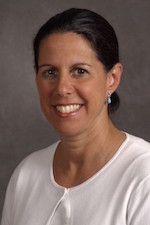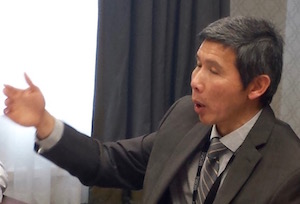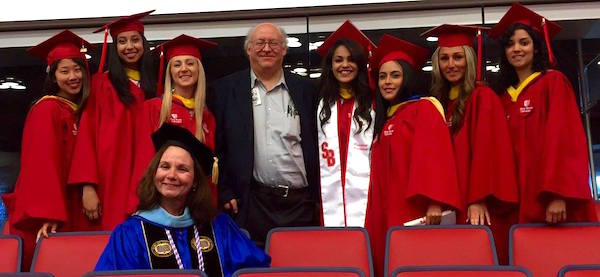
| Volume 25 Number 6 | Stony Brook, NY | < June 2016 > |
 |

|
|
Helene Benveniste, MD, PhD
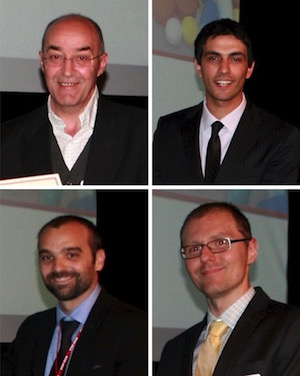
Eric Noll and Martin Kaczocha A total of 46 posters were presented by faculty members, residents, fellows and students. Of these, ten were selected to be presented in two Moderated Poster Sessions. The results of judging from those sessions are:

|
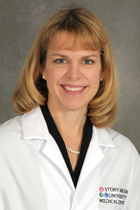 Dr. Joy Schabel received the 2016 SOAP Teacher of the Year Award in May at the annual SOAP meeting. The SOAP Teacher of the Year Award "recognizes outstanding practitioners of obstetric anesthesiology who have demonstrated superior teaching primarily of anesthesiology residents and fellows, and secondarily of obstetricians, nurses, midwives, and the lay public". Congratulations, Joy!
Dr. Joy Schabel received the 2016 SOAP Teacher of the Year Award in May at the annual SOAP meeting. The SOAP Teacher of the Year Award "recognizes outstanding practitioners of obstetric anesthesiology who have demonstrated superior teaching primarily of anesthesiology residents and fellows, and secondarily of obstetricians, nurses, midwives, and the lay public". Congratulations, Joy!
Dental Anesthesia Residents Drs. Kevin Dincher, Brandon Fitzgerald, Shelly Levin and Breanna Weiland passed the written board exam given by the American Dental Board of Anesthesiology. The Stony Brook Dental Anesthesia Residency program now has a 96% passing rate for the written board examination. Drs. Tazeen Beg, Francis Stellaccio, Srinivas Pentyala and James Dilger were each awarded a Certificate of Appreciation for Community Service in 2015. Each year, Stony Brook University Hospital and the Department of Community Relations honor those who participated in community outreach. The four departmental recipients this year were recognized for their participation in theHOPE (Health Occupations Partnership for Excellence) program. HOPE promotes and fosters the development of promising high school students from underserved, racially and ethnically diverse communities, and strives to support them in pursuing a college education and future careers in the healthcare industry. 
|

Chief Resident for Medical Student Activities: Eldhose Abrahams, M.D. 
|
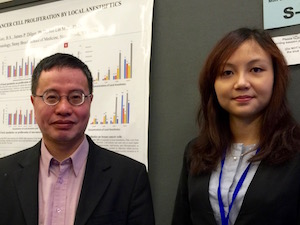
The annual meetings of the Association for University Anesthesiologists (AUA) and the International Anesthesia Research Society (IARS) were held in San Francisco last month. Dr. Jun Lin presented “Lidocaine inhibited glioma cell proliferation via TRPM7” at the AUA. This year the AUA host institute (UCSF) presented a fascinating forum on "Precision Medicine: From Molecules to Social Justice". At the IARS meeting, 14 posters from Stony Brook were presented. Chunyun Xiao, a graduate student in Physiology working in Dr. Lin’s lab, presented her work on effects of local anesthetics on breast cancer cells and five other posters with Dr. Lin during IARS. See more photos taken at the meeting.

|
|
Ursula Landman, DO
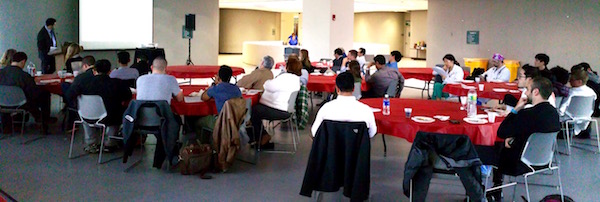
Dr. Kagan gave a concise review of "A systematic review and meta-analysis on the hazards of discontinuing or not adhering to aspirin among 50,279 patients at risk for coronary artery disease" by Biondi-Zoccai et al. Coronary artery disease. (CAD) was discussed as the leading cause of morbidity and mortality worldwide. Acetlysalicylic (ASA) is the most commonly given antiplatelet medication worldwide. Adverse side effects of ASA were reviewed. In addition, certain cases prone to increased bleeding were discussed. This review was done to increase awareness of the hazard of ASA withdrawal or noncompliance in patients with CAD or at risk for CAD. They concluded that ASA discontinuation should be advised only when the risk of bleeding or other adverse effects overwhelm that of the CV atherothrombotic events. In our discussion, it was noted that the continuation of ASA does not dictate our type of anesthetic. However, the continuation of plavix becomes an issue with regional anesthesia. It was also noted that the new 2016 guidelines take into account the Poise 2 study and actually advocate continuation of ASA. Dr. Bennett-Guerrero suggested some additional articles on the subject. Gilard et al 2015, Omar et al 2014 and Feres et al 2013 
|
|
Tazeen Beg, MD

My daughter, Amber, is a junior at the Stony Brook School. Her Engineering Innovation and Design Class had a project to build a boat out of just cardboard and tape. The students then rowed these boats across the high school's pool. Her group came in second place; Amber is in front on the left in the photo. A video of the in-water test of the boats is posted on YouTube. Watch between 3:00 and 3:50 to see the splash she made! |
|
Lindsay Fischer
My fabulous news is that we finally got to welcome our newest little members of the anesthesia family.... baby girl "A" Campbell (Cami) Janie (6lbs 7oz) and baby boy "B" Jack Davies (6lbs)! Had an amazing nsvd at 329/337 on May 2 with the absolutely amazing Dr Meng Wang...who as we all know is just simply phenomenal!!! I want to thank everyone who went the extra Mile for me during this pregnancy ... I am truly so very grateful!!!! 
|
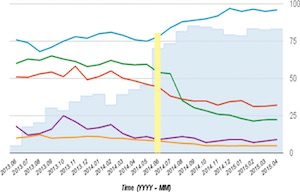

|
|
Jim Dilger
This 2-meter diameter sculpture, assembled from 180 aluminum parts, is entitled "Spaghetti Code Sculpture".


|
|
SleepTalker, the Stony Brook Anesthesiology Newsletter is published by the Department of Anesthesiology
Stony Brook Medicine, Stony Brook, NY Tong Joo Gan, M.D., Chairman Editorial Board: James P. Dilger, Ph.D., Stephen A. Vitkun, M.D., M.B.A., Ph.D., Marisa Barone-Citrano, Shivam Shodhan, M.D. |



 Demetri Adrahtas, M.D.
Demetri Adrahtas, M.D. Antanique Brown, M.D.
Antanique Brown, M.D. Joseph Caballero, M.D.
Joseph Caballero, M.D. Tinsae Demissie, M.D.
Tinsae Demissie, M.D. Diana Escobar, M.D.
Diana Escobar, M.D. Michael Khalili, M.D.
Michael Khalili, M.D. Justina Lekhraj, M.D.
Justina Lekhraj, M.D. Yuchen Liu, M.D.
Yuchen Liu, M.D. Sana Na Javeed, M.D.
Sana Na Javeed, M.D.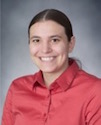 Andie Smestad, M.D.
Andie Smestad, M.D. Jonathan Bacon, D.D.S.
Jonathan Bacon, D.D.S.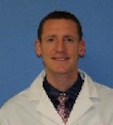 Tyler Tomkinson, D.M.D.
Tyler Tomkinson, D.M.D.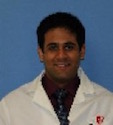 Hasan Zia, D.D.S.
Hasan Zia, D.D.S.